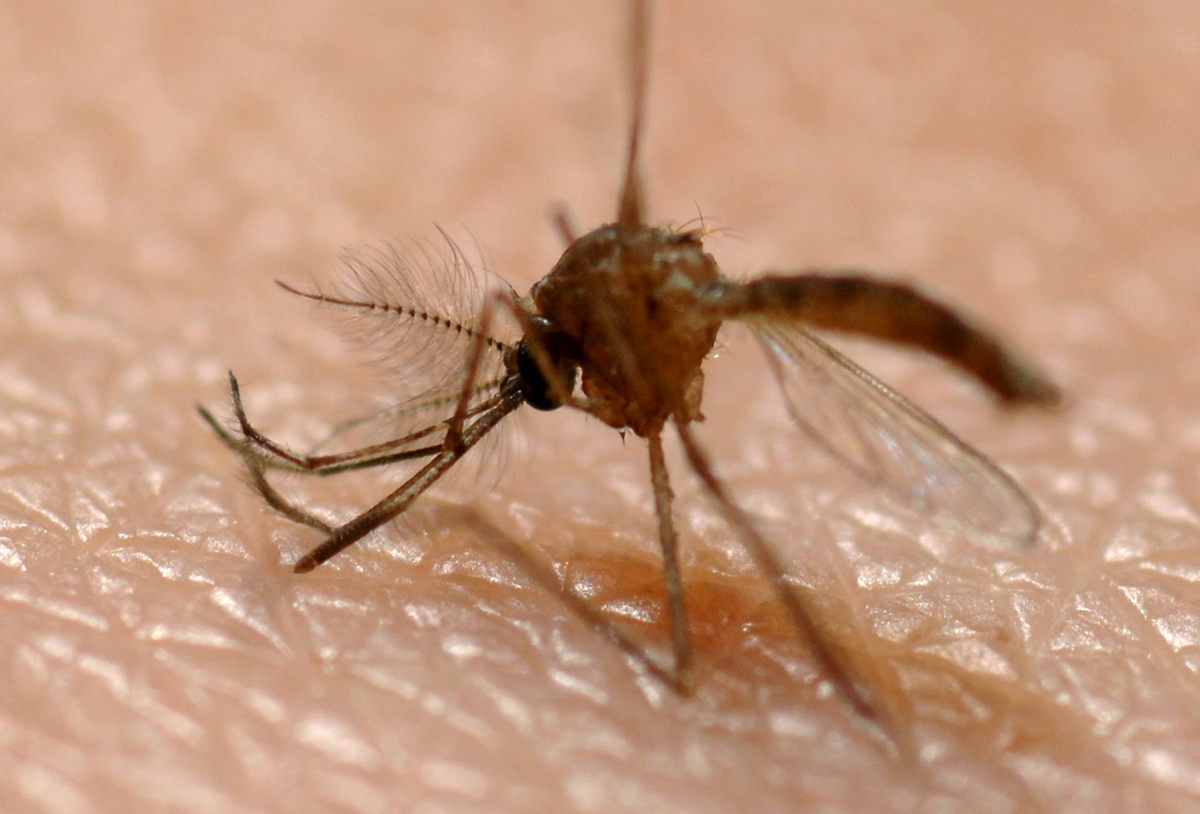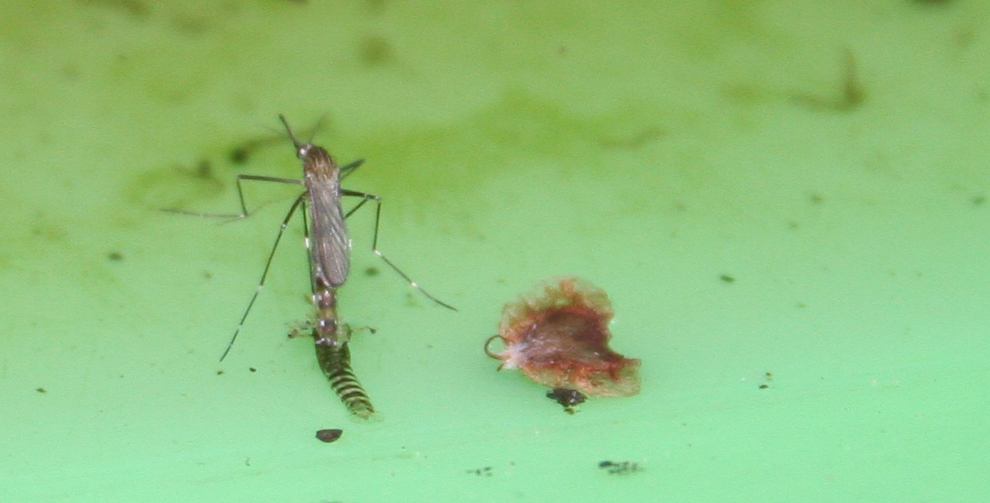Mosquitoes suck.
And with all the rain that’s inundated Texas this year — many parts of the state have blown past their average rainfall amounts — mosquitoes may suck extra hard this summer. For some Texas cities, that means bringing out the big guns: pickups that crawl through neighborhoods, usually in the evening, spraying insecticides to knock adult mosquitos out of the air and kill ’em dead. But the stout chemicals used by cities to keep mosquitoes in check could pose health problems for people and reduce populations of beneficial insects, environmental advocates say.
Mosquitoes are most active in Texas during the hot summer months of June, July and August, which is why communities from Amarillo to Lufkin have rolled out their fleets of mosquito trucks in recent weeks. The tanks mounted in the beds of pickups can be loaded with any number of insecticides, including organophosphates (extremely toxic and interrupt enzymes in the human nervous system) and pyrethrins (tend to kill mosquitoes but are also harmful to good bugs, fish and birds). This approach to mosquito control, called “adulticiding,” only kills mosquitoes in their final stage of life, and only when they come into direct contact with the poison; those who oppose the use of airborne chemicals for mosquito control, along with city officials who order the spraying, generally agree that the technique is costly and less effective than other methods that target larvae. So why spray at all?

“As is often the case, people like a dramatic intervention,” said Lori Ann Burd, who directs the environmental health program at the Center for Biological Diversity in Arizona. Mosquito populations are better controlled when residents dump or drain standing water that collects in their yard, or when cities place inoffensive bacterial “dunks” in standing water to kill larvae before they morph into adults, she said. “There are some basic things that need to be done that just aren’t very exciting. Then everyone goes for the more exciting thing, which is the spraying,” Burd said.
In the days of yore, Texas cities loaded up spraying trucks with malathion, a member of the organophosphate family, to control mosquito populations. But there have been concerns about malathion since at least 1990, when Los Angeles was drenched in the pesticide to knock out fruit flies ravaging agricultural crops in the surrounding area, said Neil Carman, a scientist who directs the Clean Air Program at the Sierra Club’s Lone Star Chapter and formerly worked as a state air quality investigator. Some people — especially the homeless who were outdoors when malathion was sprayed — said they fell ill afterward. “Malathion targets a very critical enzyme in people, animals and pets,” Carman said. “It’s a nasty chemical.” Exposure to high amounts of malathion may cause difficulty breathing, chest tightness, dizziness, loss of consciousness and death, the Centers for Disease Control and Prevention reports.
More recently, organophosphates have faced mounting pressure worldwide. Thirty-three organophosphate pesticides have been banned in the E.U. In the United States, their use from 2006 to 2016 dropped by almost half. But the chemicals remain in the arsenals of some Texas communities.
Harris County health officials use malathion when mosquitoes test positive for disease, according to a 2017 Houston Press article. In nearby Galveston County, workers systematically spray malathion by truck, along with Naled and chlorpyrifos (also organophosphates) by plane, each year. Naled “is a hazard to human health due to severe acute eye irritation, corrosive dermal irritation and neurotoxicity,” the USDA says; chlorpyrifos has been linked to autism and ADHD in children.
Perhaps such dramatic interventions would be defensible if Texas were battling a wave of mosquito-borne illness. After all, mosquitoes, particularly the genuses Aedes, Culex and Anopheles, are vectors for potentially deadly viruses such as West Nile, Zika and Chikungunya. The insects, and the diseases they can harbor, kill more people than any other animal in the world (humans come in a distant second place). In 2012, Texas saw an “unprecedented” outbreak of West Nile, a disease that can cause inflammation of the brain, fever and disorientation. Almost 1,900 Texans were infected that year.
As of June 25, no human cases of West Nile had been reported in Texas this year, according to the CDC. Despite that, some Texas cities have already begun spraying regimens. In the Dallas suburb of Roanoke, officials started spraying early this summer to “be ahead of the game.” Amarillo rolled out its spraying trucks in early June; Wichita Falls is fogging neighborhoods where higher-than-normal numbers of mosquitoes have been caught in traps, a city official told the Observer.

In Galveston County, where West Nile hasn’t been detected since before 2018, officials don’t wait until a mosquito tests positive for a dangerous disease to roll out their suite of organophosphates. Rather, the decision to spray is made when mosquito numbers are high in a given area, said Ashley Wilson, an entomologist at the county’s mosquito control office. But what about the potential harm to people posed by the chemicals? “We make sure we’re following directions on the [product’s] label provided by the EPA,” Wilson said, which is the main precautionary measure cities are required to follow.
Local governments may be taking their cues from the state health department’s spraying. In 2017, after Hurricane Harvey swamped large swaths of the state, the department authorized aerial spraying of Naled and pyrethrin-based Duet. The Texas Department of State Health Services acknowledged then that the action was less about the potential spread of disease than the comfort of first responders. “Most mosquitoes that appear after floods are nuisance mosquitoes that don’t spread disease but can have a serious effect on recovery operations by preventing responders and people affected by a disaster from being outside,” the agency said in a press release published at the time. The agency approved another spraying operation in July 2018 in Aransas County when droves of mosquitoes hampered Harvey recovery work.
DSHS does not restrict the types of chemicals cities may use in their spraying operations, nor does it require them to spray only in the case of an imminent disease outbreak.
Some Texas communities have taken a more careful approach to mosquito control. The city of Abilene hasn’t activated its spraying trucks for four years, and officials there say they won’t do so until a local mosquito tests positive for West Nile or another disease. In Waco, Environmental Health Manager David Litke said the city hasn’t sprayed since the 1980s. The city hasn’t trapped a disease-carrying mosquito for at least the last two years. “If we’ve got a lot of disease, then that becomes a lot more serious and presents the need to do more spraying,” Litke said. “If there’s no diseases, then why should we worry about that mosquito?”
Populations of disease-carrying mosquitoes are only expected to increase as a result of climate change. More frequent deluges will create ample breeding grounds; warmer temperatures will allow them to expand their range. So in the future, when city officials are faced with a question — to spray or not to spray — they may opt for the former.







